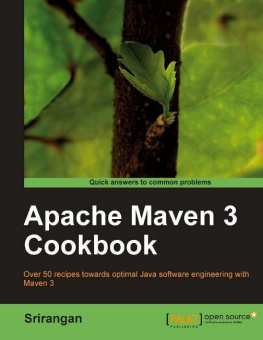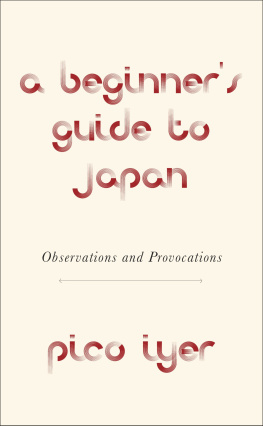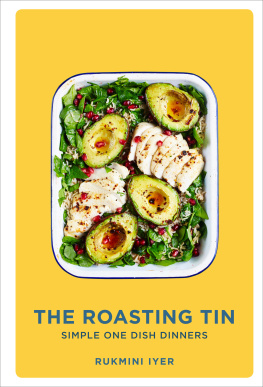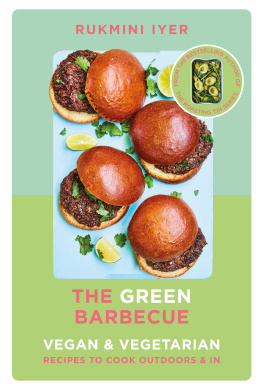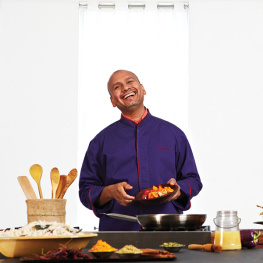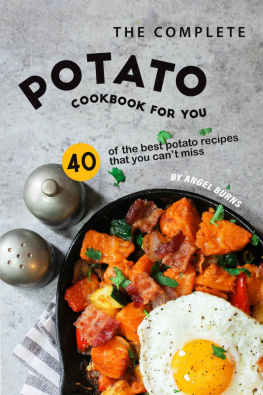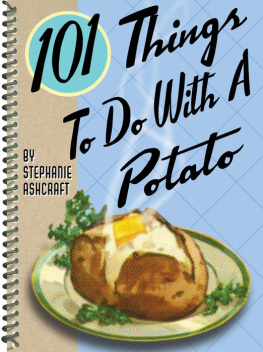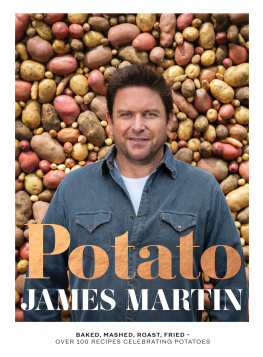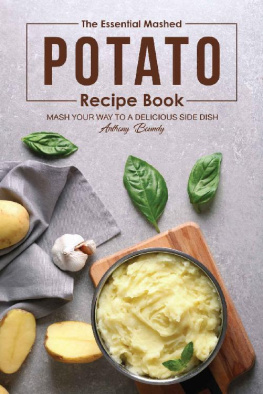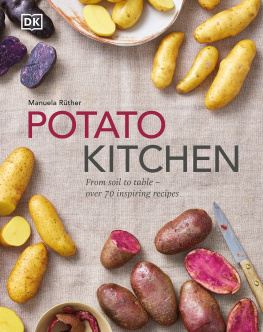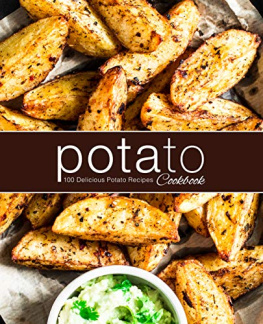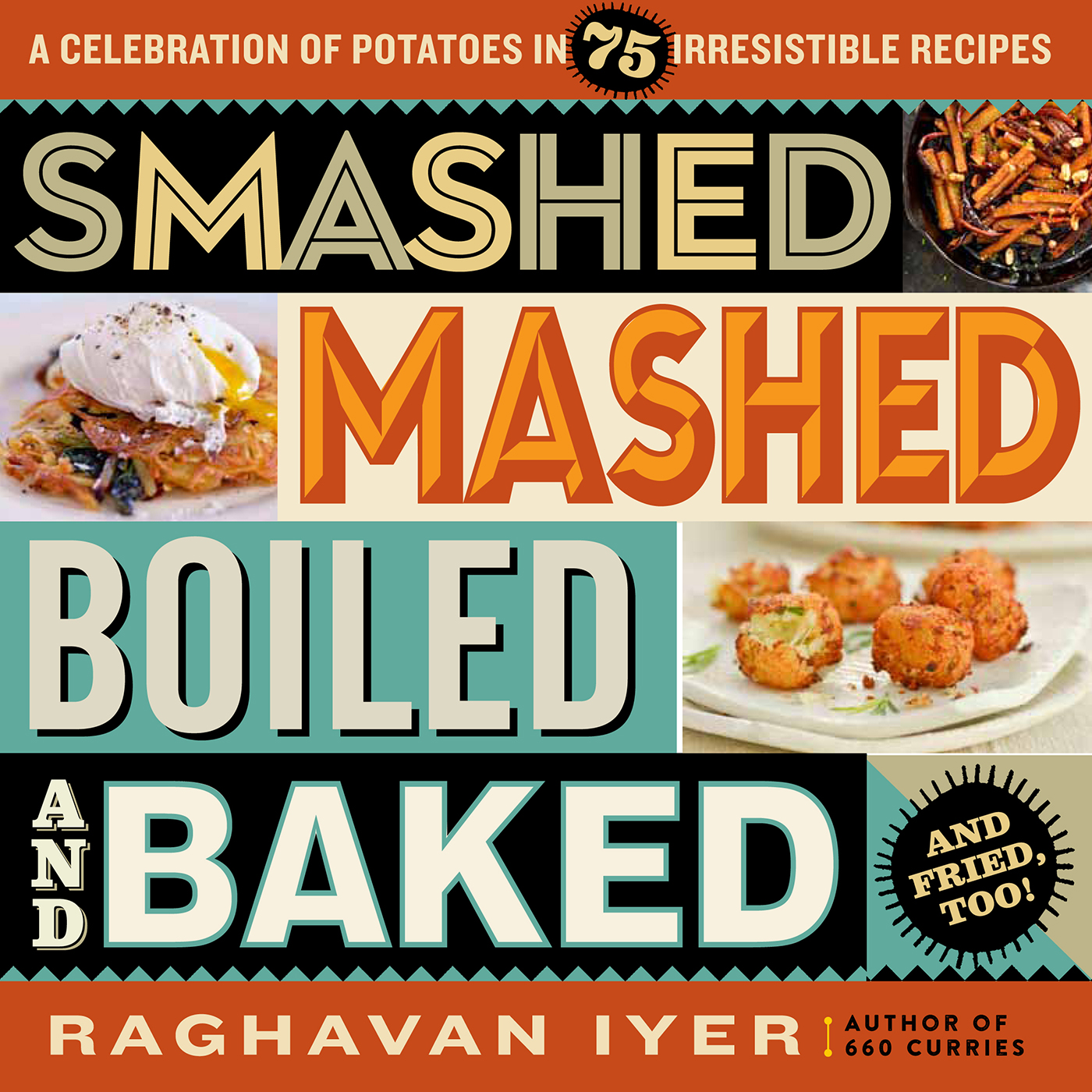Raghavan Iyer
Smashed
Mashed
Boiled
and
Baked
and Fried, Too!
Workman Publishing New York
This book is dedicated to the one in my life who stood by me over the years and tirelessly supported my decision to come to the United States to make a life in the culinary worldDr. Lalitha Iyer, my sister. Without you, I would never have come this far!
Acknowledgments
To get a potato varietal to the marketplace often takes ten years or more of creation, cultivation, and testing for its survival in disparate climates. Writing a cookbook can be similar in so many ways. My passion for potatoes spans over fifty-five years, but the idea to put it in writing was relatively quicker than that. An evening dinner at a Turkish restaurant with my dear friend, who happens to be my editor, was enough to get the dialogue started over a side of potatoes. Within weeks I was on my way to start creating and writing Smashed, Mashed, Boiled, and Bakedand Fried, Too! And for that I thank the amazing editor Suzanne Rafer and my agent, Jane Dystel, for making it happen.
Researching the material was a monumental task for which I have Phyllis Louise Harriss diligence to thank. Sita Krishnaswamy, a close Canadian friend, led me to Agnes Murphy, the research scientist who provided crucial info on the life of a tuber. Her friends became mine as I spent a long weekend getting to know all about french fries from the owners of McCain FoodsAllison McCain, his wife, Clare, and their son, Brian.
A plethora of recipe sharers and testers came through to nurture the project. Tukkur Vanvark, Nancy Hayer, Sandra Gutierrez, Mary Evans, Esperanza Constellano, Nancy Coune, Mary Jane Miller, Scott Edwin Givot, Suraj Pradhan, Yukari Sakamoto, Perrine Medora and her son, Zubin, Priscilla Feral (who shared Miyoko Nishimoto Schinners recipe), Meredith Deeds, Mette Nielsen, Sandra Mandel, Guanghe Luo, Natasha MacAller, Florence Lin, David and Martha Dovart, Shirley Corriher, and Rohan Singh. A huge debt of gratitude to my dear friend Jim Dodge, who was an incredible wealth of information and recipesthere is a reason why he is a world-renowned and revered pastry chef! And the book signings he organizes at various Bon Apptit Management Company accounts nationwide are so very supportive and for that, I give my heartfelt thanks.
Thanks, too, to the folks in my Canola oil worldDorothy Long Sandercock, Leah Mann, Ellen Pruden, Simone Demers Collins, and Shaunda Durance-Tod. And to my boys night group: Dr. Jeff Mandel, R J Singh and Tara Jebens-Singh, Raymond and Terra Vaughn, Jiten and Jennifer Gori, Ben and Zaidee Martineven though they all take credit for my work, pretending its the result of their collective minds (whatever gets them through the day!). Gratitude to Robert Schueller from Melissas for sending me remarkable potato varietals to test and Don Odiorne and his team from the Idaho Potato Commission for their valuable support.
Many thanks to the astounding team put together by Workman Publishing (I still miss you, Peter Workman) that pulled off a mind-blowing book: Suzanne Fass and her attention to detail while copyediting and maintaining my voice; Lisa Hollander, who breathed life into the pages with her colorful and evocative layout; Anne Kerman, who assembled a great team to photograph the book, including photographer Matthew Benson, food stylist Nora Singley, and prop stylist Sara Abalan; Sarah Brady, who assisted Suzanne with the editing; production editor Kate Karol; typesetting manager Barbara Peragine; and production manager Doug Wolff. Thanks to Katie Workman for her support, friendship, and great sense of humor; Selina Meere and Jessica Wiener, who lead the band of drum beaters promoting and marketing the book, along with the incredibly brilliant Rebecca Carlisle and Jenny Lee.
Finally, loving thanks to my family, who was there for me with their quiet support as I plowed through the manuscript: Terry Erickson, my partner of thirty-four years, and our son, Robert Iyer-Erickson, and my siblings and all their families in India (you all know who you arethere are so many!).
So, I invite you to enjoy the amazing flavors in these recipes that mean the world to me. Savor them every which way: smashed, mashed, boiled, baked, and fried, too!
Contents
A Deep-Rooted Obsession
I am not petrified to openly admit my addiction. It may be the first step toward recovery but, honestly, I have no intention of recovering. There are billions like me who fall into this category. We are all victims of the easy-to-love vegetable known simply as the potato. Once its dirt-smothered skin is scrubbed and cleaned, its amenable to being smashed, mashed, whipped, stir-fried, roasted, baked, poached, fried, and even braised.
I feel fortunate to have been born in India post-sixteenth century, after the Spanish and Portuguese traders and settlers introduced the country to potatoes (along with tomatoes and chiles). My love affair with this tuber began the moment I was weaned off milk into the world of spices and solids. My mother smashed a variety similar to the American russet and peppered it with crushed blackened red chiles, roasted lentils, and black mustard seeds. A generous drizzle of clarified butter, a sprinkle of coarse sea salt, and a handful of finely chopped fresh cilantro stirred into the smash and the whole concoction made its way into my eager mouth. And when it came to my evening snack (that she so graciously made all throughout my childhood days), invariably my answer was chips, the British Raj influence manifesting itself through their word for french fries. My mother had an unusual way of making them. As she fried the cut potatoes, she salted the oil (even though that was a disaster for the oils life expectancya fact I was unaware of at that time), making the saltiness more intense. I was hooked.
I think its pretty obvious that Im not the only one who is a potato-holic. Potatoes are the fourth-largest crop in the world, next to wheat, rice, and maize. This member of the nightshade family (which includes eggplant, peppers, and tomatoes) was rooted in the Andean civilization that cultivated it around 10,000 BCE. But it wasnt until the Inca civilization (around 1500 CE) that the potatos true agricultural impact was unleashed. The Incas intricate and sophisticated agricultural planning and tools, along with the ability of the potato to survive severe shifts in climate within short time periods, made for a winning partnership. Now potatoes are an essential ingredient in billions of kitchens in more than one hundred countries around the globe.
The Potato Whisperer

I met Agnes Murphy, a senior research scientist with Canadas Potato Research Centre in Fredericton, New Brunswick, while investigating the tubers past, present, and future. With an impressive one hundred-year history, the Potato Centre, also known as the spud stud farm, is the go-to organization in the international science community; it is also linked to the International Potato Center in Lima, Peru, and other similar research centers across Europe.
Agness aspiration is to bring to fruition varieties that are uniform, have an appealing look, taste great, and are capable of being grown in a wide range of conditions. A modern-day matchmaker who is passionate about the science of breeding, she also possesses that rare quality of balancing the ethical concerns of the current consumer with the need to create a breed that feeds the world economically. Almost half of the current crop of potatoes are grown for processing in the french fry and chip industries, and new varieties, most desired in the consumer household, are constantly being tested and cultivated.


